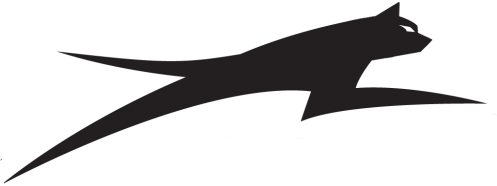How to Bond a new Panel
The correct way to replace the front-end bodywork of a crash damaged Wedge. After seeing many ‘bodged’ jobs it may come as a surprise to some, that the front end is actually grafted on by fibreglass not metal bars, pot rivets or lumps of wood. I shall endeavour to explain how.
Before any cutting is undertaken, you must isolate the wiring loom which runs through the wing on one side. Draw a line through the body section where you wish to cut off the damaged front end.
Take some measurements of the wheel arch gap and engine bay surround (where the bonnet fits) and any others you feel are relevant.
Cut off the damaged front; trim the new front to suit. Obtain two strong flat steel plates about 9” long and drill holes for screws about every 1”. Fit on the tops of the wings so half of the plate is overhanging the joint. Offer up the new section (you might need help) and align in place.
Hold in place using one screw each side, you could also support under the nose with a jack. You may have to remove the front end several times to trim until you are happy that everything including measurements look right. Next, take off for the last time and using an abrasive tool, make sure that all areas you intend to fibreglass are keyed up.
The edges of both joints should be chamfered. The lower part of the engine bay is around three quarters to one inch thick, this is bonding paste holding the two halves together. About 5” of each side of the joint needs cleaning out (a large drill bit usually does the trick). Now fit the front end using the metal plates to align up all the joints as flush as possible.
Check the measurements again and fit the bonnet as a final check. With the wheel arch area being double skinned you now have to cut out a section to give you access to bond the joint together.
This is not keyhole surgery, you need to be putting strips of fibreglass at least 8” wide, so take out 6” of the old arch and 6” of the new arch leaving about 2” at each end. Masking tape the top of the joint, close the bonnet and check the bonnet line (sometimes it pulls in at the joint, use a wedge in between the bonnet and wing to correct). Gel coat the exposed joint underneath, work the gel into the joint as well, wait for it to set, it will stay tacky which helps the fibreglass to stick.
Using one and a half 0z. mat. Cut into usable pieces, wet both sides out on a board and cover the length of the joint, work at each piece with a brush until you are confident, it will not fall off. Repeat carefully with a second layer. Leave for 24 hours to cure.
Remove the bonnet and all the screws and plates, using sandpaper sand off any rough bits where you have fibreglassed, e.g. where the screws have been. Put on one more layer of fibreglass. Clean and key the areas under the wheel arch (includes underseal) and put back the sections you cut out using plates and screws to locate. Fibreglass in between, leave to set, remove plates and fibreglass in their place. This can be undersealed later.
Remove the masking tape from the joint and you should notice the gel coat has seeped through, this will prevent the repairs sinking and showing tell-tale signs of a repair.
Using a sanding disc carefully sand down the joints, taking out all the high spots and countersink all the screw holes. Using a small brush or airline clear out all the dust from the joints and screw holes. Sweep up and collect fibreglass dust from all the cutting and grinding; sieve it, make a small amount of resin and hardener, add some dust until it thickens and this gives you extremely hard filler.
Fill both joints and screw holes (make sure in the screw holes there is no trapped air). This mixture can also be used to fill the gap where you cleaned out the bonding paste. When set it is usually best to use a sanding disc, because it is so hard. The repair can be finished off using body filler – Job done.
In my time at TVR I had a car in needing a front end fitting, I recognised the car because I had some time previously fitted a front on it. Looking back on my notes I kept, I was very pleased to find that the damage this time was before the previous repair, which was still intact.
